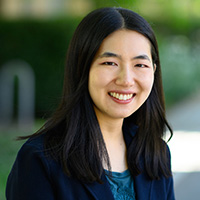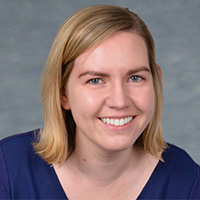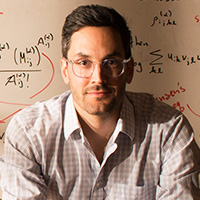By Phil Chodrow, Mari Kawakatsu, Nicole Eikmeier, and Dan Larremore
Many human and animal societies are structured around hierarchies of dominance, desirability, or influence. Implicit in these hierarchies is a notion of rank; high-ranked individuals are dominant over or more desirable or influential than lower-ranked ones. In animal societies, hierarchical rank may determine access to resources such as food, grooming, and reproduction [9]. In human societies, rank shapes employment prospects [4, 11], adolescent susceptibility to bullying [7], messaging patterns in online dating [1], and influence in group decision-making [3]. In short, hierarchies can help groups achieve desirable social coordination [6] but might sometimes result in inequitable or unjust outcomes, especially among humans.
Figure 1. Schematic illustration of the model. The vertical position of each node corresponds to its rank and arrows represent endorsements. Darker arrows signify more recent endorsements. The nodes’ positions in the hierarchies shift in response to new endorsements. Figure adapted from [10].
We utilize a dynamical approach to understand how hierarchies emerge and persist in society [10]. Our model’s foundation is a simple feedback loop between hierarchical ranks and individual decisions; agents make social decisions in response to current ranks, and these decisions in turn influence future ranks. Analyzing the model’s fixed points allows us to study the development of hierarchies.
We model \(n\) agents as nodes in a weighted directed graph that is represented as matrix \(\mathbf{A} \in \mathbb{R}^{n\times n}\). The directed links in this graph signify endorsements; link \(i \rightarrow j\) indicates that agent \(j\) is dominant, prestigious, or powerful according to agent \(i\). New links form and old links fade in importance over time, thus allowing one to understand the system’s dynamics through the evolution of the endorsement graph (see Figure 1).
In each timestep, agents first calculate a rank vector \(\mathbf{s} = \sigma(\mathbf{A}) \in \mathbb{R}^n\) as a function of the endorsement graph. The graph-ranking literature offers many choices for ranking function \(\sigma\) that range from descriptive methods like the node degree (number of attached links) to spectral methods like eigenvector centrality and PageRank [13], as well as optimization methods like energy minimization [2] and SpringRank [5].
Each agent then computes the utility of endorsing every other agent. The utility to agent \(i\) if \(i\) endorsed \(j\) is
\[u_{ij}(\mathbf{s}) = \beta_1s_j + \beta_2(s_i - s_j)^2.\]
When \(\beta_1 > 0\), the first term of the utility reflects a preference to endorse those who are high in rank (preference for prestige). When \(\beta_2 < 0\), the second term reflects a preference to endorse those who are close in rank (preference for proximity). In the final stage of each timestep, every agent uses a discrete choice model to make a stochastic endorsement based on the utilities [16]. We add these new endorsements to the state matrix \(\mathbf{A}\) while decreasing previous endorsements by a factor \(\lambda\) — a memory parameter that controls the rate at which the state matrix evolves.
Figure 2. Sample model dynamics in the egalitarian (2a) and hierarchical (2b) regimes via the SpringRank ranking function. The normalized rank \(\gamma\) of a node is the instantaneous rate at which it receives endorsements. Figure adapted from [10].
Our model’s qualitative behavior is governed primarily by the choice of the ranking function \(\sigma\) and preference for prestige \(\beta_1\). When \(\beta_1\) is small, egalitarianism reigns; nodes have approximately equal ranks that are subject to small fluctuations (see Figure 2a). But when \(\beta_1\) is large, stable hierarchies emerge wherein a small number of nodes maintain much higher ranks than their peers (see Figure 2b). We can use a long timescale approximation in several cases to analytically determine the critical value of \(\beta_1\) at which egalitarianism destabilizes into hierarchy. For example, the critical value for the SpringRank function is \(\beta_1^* = 2\). We derive similar results for the square root of the node degree (Root-Degree) ranking function and PageRank. In a few instances, we observe multistable regimes in which egalitarian and hierarchical stable fixed points coexist. The long-run behavior of the model in such regimes depends on the initial conditions.
The stochastic nature of our model makes it amenable to maximum-likelihood inference for the estimation of characteristic timescales and preference parameters from data. In an example that may be of particular interest to many readers, we consider the movement of mathematicians between U.S. research institutions using data from the Mathematics Genealogy Project, which is available in convenient form [14]. We model each Ph.D.-granting institution as a node. Institution \(i\) “endorses” institution \(j\) when \(i\) hires a mathematician who is trained at \(j\); this action treats each hiring event as an implicit affirmation by \(i\) that graduates of \(j\) are of high professional quality.
Different models give different pictures of the dynamics of the hiring network (see Figure 3). When estimating parameters with three different ranking functions, we find that Root-Degree—which is based solely on the number of received endorsements—achieves the highest likelihood. Interestingly, the estimate \(\hat{\beta}_1 = 1.28\) in the Root-Degree model lies in the bistable regime, in which both egalitarianism and hierarchy are possible. This result suggests that despite the current hiring practices of individual departments, prestige-based hierarchy in mathematics is not inevitable — it depends in part on the specific history of academic mathematics in the U.S. It also suggests that a sufficient systemic intervention could in principle destabilize existing hierarchies and promote greater egalitarianism in U.S. academic mathematics.
Figure 3. Analysis of the flow of mathematics Ph.D.s in the U.S. Nodes represent Ph.D.-granting institutions and endorsements represent hiring events in which node \(i\) endorses node \(j\) by hiring a scholar who is trained at \(j\). The normalized rank \(\gamma\) of an institution is the instantaneous rate at which that institution receives endorsements (i.e., places its graduates). Parameter estimates for the timescale \(\lambda\) and preference parameters \((\beta_1, \beta_2)\) are shown. The Root-Degree ranking function achieves the highest likelihood among the models here. Figure adapted from [10].
The use of dynamical systems, networks, and individual choices to study self-reinforcing social hierarchies allows this work to draw on the strengths of many recent scientific advances. One such advance demonstrated the modeling of network growth and evolution as sequences of discrete choices by agents [12]. That project’s use of discrete choice modeling—the branch of mathematical psychology and economics that examines how people make choices from sets of discrete alternatives [15]—inspired the utility framework of our own model.
Another study on the emergence and stabilization of hierarchies in a society of newly-acquainted parakeets found that the parakeets sorted themselves into a stable pecking order through pairwise dominance interactions over the course of a week [8]. By emphasizing the birds’ cognition, this work demonstrated that the hierarchy emerges from the network of interactions and shapes future interactions.
Finally, research has shown that steep and stable hierarchies of academic prestige characterize the U.S. faculty hiring market across various fields [4]. These findings suggest that common social feedback mechanisms structure academic hierarchies, despite wide variation in traditions of scholarship. The structures of faculty hiring networks affect not only the careers of graduates, but the spread of ideas as well [11]. We hope that our own work can shed light on the way in which these and other hierarchies emerge and persist — and conversely, how they may be challenged, destabilized, and ultimately dissolved.
This text is based on a recent journal article by the authors in the Proceedings of the National Academy of Sciences [10]. Phil Chodrow presented this work at the 2021 SIAM Conference on Applications of Dynamical Systems, which took place earlier this year, during a minisymposium on “Mathematics of Inequity and Inequality,” which was organized by Skylar Grey (University of Wisconsin-Madison) and Joel Nishimura (Arizona State University).
References
[1] Bruch, E.E., & Newman, M.E.J. (2018). Aspirational pursuit of mates in online dating markets. Sci. Adv., 4(8), eaap9815.
[2] Carmel, L., Harel, D., & Koren, Y. (2002). Drawing directed graphs using one-dimensional optimization. In M.T. Goodrich & S.G. Kobourov (Eds.), Graph drawing. 2002 International Symposium on Graph Drawing (pp. 193-206). Lecture notes in computer science (Vol. 2528). Berlin, Germany: Springer.
[3] Cheng, J.T., & Tracy, J.L. (2014). Toward a unified science of hierarchy: Dominance and prestige are two fundamental pathways to human social rank. In J.T. Cheng, J.L. Tracy, & C. Anderson (Eds.), The psychology of social status (pp. 3-27). New York, NY: Springer-Verlag.
[4] Clauset, C., Arbesman, S., & Larremore, D.B. (2015). Systematic inequality and hierarchy in faculty hiring networks. Sci. Adv., 1(1), e1400005.
[5] De Bacco, C., Larremore, D.B., & Moore, C. (2018). A physical model for efficient ranking in networks. Sci. Adv., 4(7), eaar8260.
[6] DeDeo, S., & Hobson, E.A. (2021). Commentary: From equality to hierarchy. PNAS, 118(21), 1-3, e2022912118.
[7] Garandeau, C.F., Lee, I.A., & Salmivalli, C. (2014). Inequality matters: Classroom status hierarchy and adolescents’ bullying. J. Youth Adolesc., 43(7), 1123-1133.
[8] Hobson, E.A., & DeDeo, S. (2015). Social feedback and the emergence of rank in animal society. PLoS Computat. Biol., 11(9), e1004411.
[9] Holekamp, K.E., & Strauss, E.D. (2016). Aggression and dominance: An interdisciplinary overview. Curr. Opin. Behav. Sci., 12, 44-51.
[10] Kawakatsu, M., Chodrow, P., Eikmeier, N., & Larremore, D.B. (2021). Emergence of hierarchy in networked endorsement dynamics. PNAS, 118(16), e2015188118.
[11] Morgan, A.C., Economou, D.J., Way, S.F., & Clauset, A. (2018). Prestige drives epistemic inequality in the diffusion of scientific ideas. EPJ Data Sci., 7, 40.
[12] Overgoor, J., Benson, A., & Ugander, J. (2019). Choosing to grow a graph: Modeling network formation as discrete choice. In Proceedings of the 2019 World Wide Web Conference (pp. 1409-1420). New York, NY: Association for Computing Machinery.
[13] Page, L., Brin, S., Motwani, R., & Winograd, T. (1999). The PageRank citation ranking: Bringing order to the web (Technical report). Stanford InfoLab.
[14] Taylor, D., Myers, S.A., Clauset, A., Porter, M.A., & Mucha, P.J. (2017). Eigenvector-based centrality measures for temporal networks. Multiscale Model. Simul., 15(1), 537-574.
[15] Thurstone, L.L. (1927). A law of comparative judgment. Psychol. Rev., 34(4), 273.
[16] Train, K.E. (2009). Discrete choice methods with simulation. Cambridge, U.K.: Cambridge University Press.
 |
Phil Chodrow is a Hedrick Visiting Assistant Adjunct Professor in the Department of Mathematics at the University of California, Los Angeles. He is currently working on spectral methods for hypergraph clustering, nonlinear opinion dynamics on graphs, and models of hierarchies in biosocial systems. Phil is also interested in inclusive pedagogy and the intersection of applied mathematics, data science, and social justice. |
 |
Mari Kawakatsu is a Ph.D. candidate in the Program in Applied and Computational Mathematics at Princeton University. Her current research uses tools from evolutionary game theory, dynamical systems, and network science to explore collective and emergent behavior in complex social systems. |
 |
Nicole Eikmeier is an assistant professor of computer science at Grinnell College. Her current interests include modeling networks, hypergraphs, and the incorporation of culture and identity ethics into computer science curricula. |
 |
Dan Larremore is an assistant professor in the Department of Computer Science and the BioFrontiers Institute at the University of Colorado Boulder. He and his group develop methods of networks, dynamical systems, and statistical inference to solve problems in biological and social systems, including the science of science and infectious disease epidemiology. |